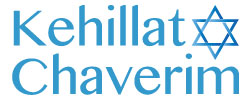Vayakhel 5779 – A Time to Be Inclusive, A Time to Build
Shabbat Shalom.
This D’var Torah is dedicated to Rabbi Yitsi Hurwitz who celebrates life daily. Read about “Rabbi Yitsi” at Aish.com.
In the beginning of this week’s Torah portion, Moses gathers the nation of Israel and lists the various materials that they can contribute to the Tabernacle, G‑d’s home on earth.
“Take from yourselves an offering for the L-rd; every generous hearted person shall bring gold, silver, or copper…”
The Rebbe explains that each of these materials represent a different persona in the nation. Gold represents the purity of the tzaddik, the fully righteous individual. Silver represents the baal teshuvah, the returnee. And, Copper, the least expensive of metals, represents the sinner.
We might have thought that only a tzaddik who is removed from the enticements and ensnarement of this world has the ability of transforming it into something holy. Or, we might believe that only a baal teshuvah, who intimately knows the negativity of this world, can transform its lowliness into loftiness. But the Torah teaches us that even the sinner must be included in this endeavor, and contribute his share.
No matter our spiritual standing, no matter our intellectual abilities or our emotional intelligence, we were all handcrafted by our Creator to make our world a home for G d.
What matters in life is not who you are, or to which gender you belong, but what you can contribute to the common cause. If you have a specialized skill, then utilize your ability to bring beauty and greatness to the world.
Building the mishkan was the most holy and intricate task that the Jews were assigned during their sojourn in the desert. Nonetheless, every Friday night all work on this magnificent edifice would come to a grinding halt
AT their first stop in the wilderness, the Jews rested at the foot of Mt. Sinai, where they received the Torah and all its teachings. According to Midrash Sh’mot Rabbah, “when God gave the Torah to Israel, they became exempt from the sway of the Angel of Death… For as soon as Israel accepted the Torah, God adorned them with His own glorious splendor. Rabbi Shimon bar Yohai said: God gave them weapons on which was engraved the Ineffable Name of God, and as long as this sword was in their possession, the Angel of Death could exercise no power over them.”
But then, according to the Midrash, and with fear of the unknown by their side, they sinned when they built the Golden Calf: Thereafter God deprived them of all good things. With their rebellion against God, the Israelites once again fell under the sway of death.
Even without taking this story as the absolute truth, as though it were conveying a piece of history, it is possible to understand it as speaking metaphorically about an insight of great worth: we live eternally to the extent that we can tap into something eternal, something that connects our most distant ancestors, ourselves, and our most distant descendants.
Judaism is that eternal something. In the stirring words of Rabbi Jacob Kohn (a 20th Century US Rabbi), a life of Torah provides “the unbroken faith that links generations, one to another.”
When we study the words of the sages, read the eloquent words of our Prophets, or chant the words of the Torah, we link ourselves to their lives. In the words of the Mishnah, “their lips move from the grave.” We grant them posthumous (pas’-che-mous) life through our study. And we connect ourselves to those of our descendants who will also pour their souls into those same insights.
When we translate the mitzvot from objects of study into living realities, we link ourselves to an aspect of kedushah (holiness) that stretches throughout, and above time. Observing the mitzvot allows us to soar and transcend time, to enter the realm of the sacred and the timeless.
And, finally, when we study our sacred writings, make the mitzvot the cornerstone of our lives, and let the values of Judaism shine through our deeds, we make of our souls tabernacles in which God can dwell. By placing ourselves in the Eternal One’s line of vision, we join the parade of Profits and sages who live eternally in God’s eternity.
The truth is, in some significant ways, the Torah still conveys eternal life. In values that pass from one generation to another, in deeds that transform our communities and the world, and – most precious of all – in making ourselves fit to be cherished by God – we live on as members of Beit Yisrael, the Household of Israel.
In preparing this D’var Torah, I would be remiss if I did not mention the scholars who helped me along the way.
Chana Weisberg is the editor of TheJewishWoman.org.
Then there is Rabbi Elisha Greenbaum, and of course…
Rabbi Bradley Artson
Shabbat Shalom!

